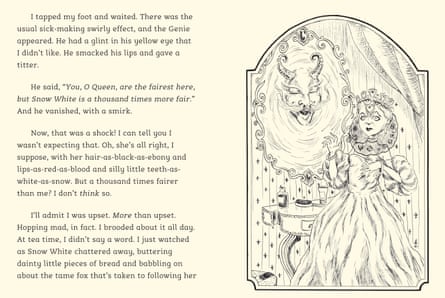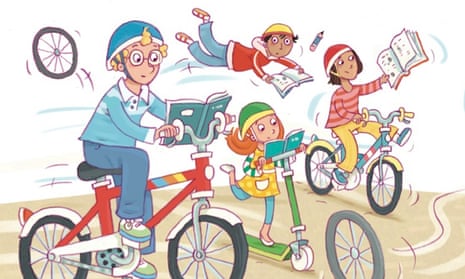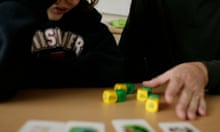Mainstream understanding of dyslexia has come a long way from the days when children with reading difficulties were labelled simply lazy or stupid. This week in England and Wales is Dyslexia Awareness Week and according to the British Dyslexia Association, it’s estimated that 10% of the population are affected, 4% severely so. When there is a substantial body of evidence to show that children who read for pleasure achieve better academic results - and have greater levels of personal happiness throughout their lives – what is the best way to entice children to whom books seem inimical tests they’re set up to fail, into rewarding, enjoyable experiences?
Barrington Stoke is an Edinburgh-based publisher that specialises in books for children with dyslexia. Design and presentation are important factors in its output – with careful character spacing, and a bespoke font, called Barrington Stoke Roman, that minimises the chance of a reader confusing letter shapes. Illustrations are strategically placed to create a sense of accessibility, breaking up what may otherwise seem a dense textual barrier. The books are printed on a yellowish, tinted paper that minimises visual stress – a condition that can make printed words appear to dance or jump – and the pages are thicker too, to prevent words and pictures showing through the paper.
“Don’t ask what’s wrong with the reader, ask what’s wrong with the book,” says managing director Mairi Kidd. “We routinely think of accessibility for buildings, broadcasts and public service publications – so why not books?”

How does an author change their approach to writing, to cater for dyslexic or reluctant readers? Non Pratt, author of YA novel Trouble, says directness is key: “Reading speed is a big factor in keeping your reader interested. If someone reads slowly, you can’t constantly expect them to hold information over several sentences or clauses when so much of the reader’s energy is already focused on decoding the words themselves. Short sentences are no barrier to conveying meaning, but long ones can be.”
Award-winning author Meg Rosoff, who wrote the bestselling YA novel How I Live Now, found the discipline of writing her dyslexic-friendly title Moose Baby in simple language carried an aesthetic bonus, as well as a readability pay-off – and she is writing a second, Good Dog McTavish, for Barrington Stoke in 2017: “The tone of [Good Dog McTavish] is mock-formal, a little bit Edwardian almost, with a fair number of long words and complicated constructions. I ended up simplifying the story based on editorial suggestions and the result was much better and tighter than the original.”
Similarly, Anthony McGowan, author of The Knife That Killed Me, found writing for reluctant readers posed a tantalising challenge; he “stopped trying to impress, and tried instead to engage” while writing his books Brock, Pike and The Fall.
“My ‘normal’ writing style is quite complex, full of ‘look at me’ linguistic flourishes, and extravagant metaphors,” McGowan says. “That all had to go … [In] Brock, I focused on character, setting and plot. I pared my writing style down, using simpler constructions and more direct language. I think it made me a better writer.”
There’s no shortage of role models for writing about dyslexia: Carnegie winner Sally Gardner (I, Coriander, Maggot Moon) has struggled with dyslexia all her life; and Tom McLaughlin (The Story Machine, The Accidental Prime Minister) has frequently spoken out about his experiences, both as a reader and a writer.
“I found that audiobooks [were] a great way to get my fix of books without having to read,” McLaughlin says. “My mum was a teacher who was working with children who had reading problems, so it was picked up in my house quite quickly.“I find it much easier to write than I do to read. Writing tends to be something that really flows – obviously there are a good few spelling mistakes, as well as grammatical ones too. But that’s something that can be fixed later, something I tell kids all the time.”
But dyslexic readers need not be restricted to certain fonts or page thicknesses; Kidd recommends they try magazines, comic books, audiobooks and novels that are “filmic” and easy to visualise. Shorter fiction can also be rewarding, she says; when finishing a book gives a reader a sense of accomplishment, this goes double for dyslexic and reluctant readers, who invest so much additional effort in the process. “Classics such as Of Mice and Men or The Strange Case of Dr Jekyll and Mr Hyde are short, sharp and brilliant,” Kidd says. “Be careful not to give out the message that long equals good … don’t judge kids for reading books that are too ‘young’ for them or not serious enough. All reading is good reading and will help strugglers towards an easier relationship with the printed word.”










Comments (…)
Sign in or create your Guardian account to join the discussion